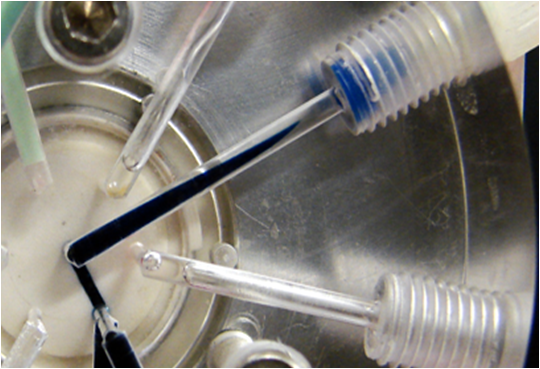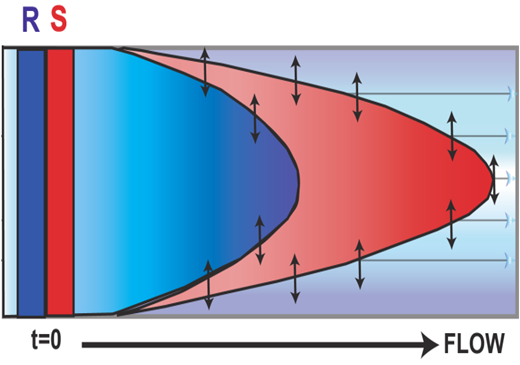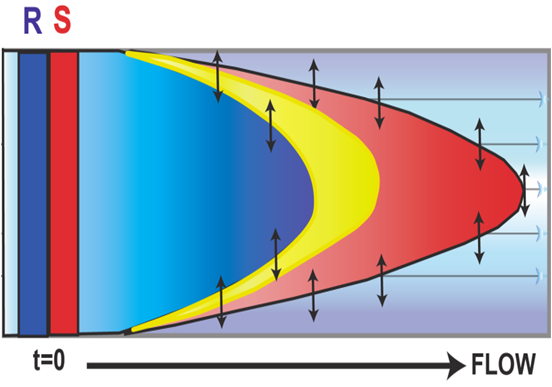0.2.11.
Mixing by Dispersion Using Programmable Flow
Sequential Injection is based on stacking sample and reagent zones, by aspiration into a holding coil, and by their mixing executed by flow reversal, that transports the reaction mixture into and through the detector.
As the sample zone is aspirated into the holding coil, it acquires a modified parabolic profile, as it passes through the rotor and adjacent ports of the LOV module (A). In absence of radial mixing the sequentially aspirated sample and reagent zones would not mix and will not react (B).
However, the design of the flow path, with abrupt change of directions and of internal diameters promotes radial mixing assisted by local turbulence and facilitates chemical reactions, intended to quantify the analyte (C). Note that the initial formation of the parabolic profile is beneficial, as it increases the contact area through which the interaction of sample with regent solutions takes place. The subsequent flow reversal will promote the radial mixing.

A

B

C









